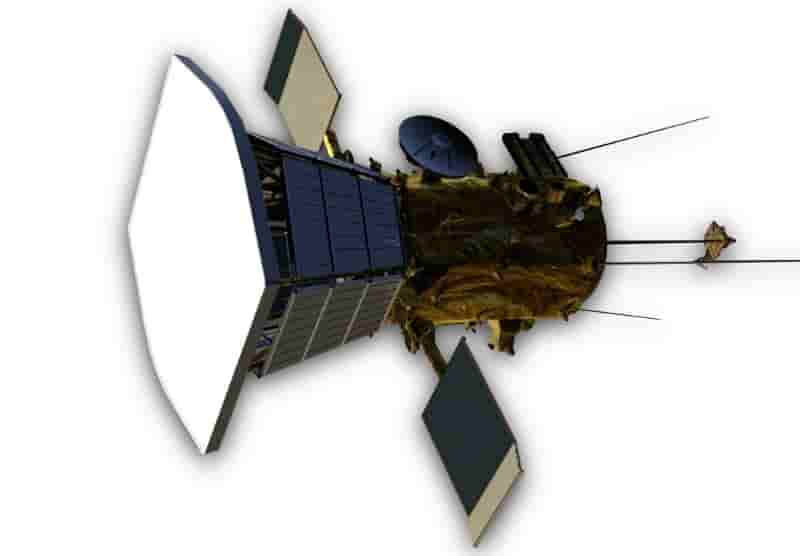2021 saw a tentative return to “normal” life. Scientists returned to their labs, continued to take on Covid, blackholes, climate change and delved into so much more. Let us take a look at some of the most fascinating scientific discoveries of 2021.
1. Medicine/ mRNA vaccines: We found a new way to directly talk to our body!

Vaccines have been around — and have noticeably extended the life expectancy of humans — since a few centuries ago. Research on mRNA technology is also longstanding and has been conducted for decades. What is new, however, is the ability to harness the power of mRNA in developing state-of-the-art vaccines.
Conventional vaccines often contain weakened viruses or pieces of the protein coating around them, in order to familiarise the immune system with the characteristics and/or functionalities of the pathogen. They work and they have already protected countless lives against polio, measles, et cetera.
Messenger RNA (or mRNA for short), on the other hand, is like a way to directly talk to one’s body! Instead of injecting a subunit or an inactive whole of a virus, we could pass some information to the body to teach it how to develop a specific type of protein (which could be found on the real virus as well), triggering the immune system to produce necessary antibodies.
The deeply interesting part about the mRNA technology is the fact that we could use it not only against the new SARS-CoV-2 virus, but also possibly against other viral diseases like HIV, and even a handful of non-viral ones such as cancer. All that is needed is finding the right ribonucleic acid sequence and then it could be passed to the body in no time. Hopefully, more and more diseases will soon be eradicated with this new technology.
2. Archaeology/ The rise of the abandoned city of Aten
After seven months of excavations, in April 2021, archaeologists in Egypt discovered the 3400-year-old city of “The Dazzling Aten” on the west bank of the Nile. Many of the layers within the city are said to have been buried under sand laid untouched for more than three millennia.
The lost golden city was built by Amenhotep the Magnificent (Amenhotep Ⅲ), the ninth pharaoh of the 8th Dynasty. It is known that Amenhotep’s young heretic son, Akhenaten, abandoned his inheritance and decided to leave Thebes, which had been Egypt’s capital for more than 150 years. To this day, it remains a mystery why the young pharaoh chose to turn his back on his father’s, albeit controversial, legacy.
Many believe that the Golden City of Luxor could provide us with answers to such questions and offer a rare glimpse into the life of the Ancient Egyptians during the empire’s golden age.

3. Entomology/ “It has been a good year for butterflies”: First video of how a butterfly’s colourful scales form inside a chrysalis
Glancing at butterflies, we tend to find charm and beauty in their brightly coloured wings of iridescent blue or electric gold, but have you ever seen how this insect’s wings are actually grown? Well, great news; what happens inside the chrysalis does no longer need to stay in the chrysalis. In November, scientists at the Massachusetts Institute of Technology (MIT) developed a unique method to look inside a butterfly’s chrysalis and video record in real-time how the scales of this magnificent insect develop.
But that’s not all of the discoveries that happened in the butterfly world. Scottish scientists, using powerful cameras and a wind tunnel, managed to record the butterfly’s unique flying skill and solve a decades-long mystery of how a butterfly’s wing “clap” works in ordinary flying circumstances.
4. Climate Catastrophe/ Major climate changes inevitable and irreversible
In August 2021 we learned that our worst fears about the climate catastrophe are sadly spot on. Scientists at the Intergovernmental Panel on Climate Change (IPCC) published their findings on climate change painting a grim picture of the planet’s health owing to human-induced climate change and rising temperatures. These seem set to rise above the 1.5° threshold, which will signal a critical point of no return for those most exposed to the catastrophe.
Commenting on the report, UN Secretary-General António Guterres did not mince his words: “Today’s IPCC Working Group 1 report is code red for humanity. The internationally agreed threshold of 1.5°C is perilously close. We are at imminent risk of hitting 1.5°C in the near term.” As expected, the United Nations remains powerless, though it is doing its best to raise the alarm as Laocoön, unheeded, had done with the Trojans. Meanwhile, disaster has set its course, riding on the waves that will usher in the destruction of the world as we know it.
“There is too much stupidity around”: The Climate Change Report

5. Physics/ There seems to be a loophole in the uncertainty principle
As you may know, the world of quantum mechanics has its fair share of quirkiness and twist of reality. An electron can be a wave or a particle, or as in the case of the famous thought experiment, the cat is both dead and alive. The eccentric behaviour within the quantum realm is not only limited to extremely small particles like electrons; the reason why we may not experience this in everyday life is simply that our senses and other tools are not able to identify and observe it. In other words, the phenomenon becomes less observable as things scale up.
This year two teams of scientists based in the US and Finland were able to bring what we had previously observed only between individual atoms and scale them up so that we can observe them between micron-sized aluminium membranes, successfully proving that odd quantum behaviour can also exist at larger scales. Many researchers believe that these findings can help us design quantum computers with extraordinary calculative powers.
6. Cosmology/ James Webb Space Telescope on the path to L2
The event itself is not an actual “scientific discovery” (rather an engineering achievement). Nonetheless and by assuming that no mechanism goes wrong, it will definitely trigger many. By the time of writing this article, the James Webb Space Telescope (abbreviation: JWST) is en route to the second Lagrange point of the Earth-Sun system and is carefully deploying its sunshield. Hopefully, mankind is about to open a new eye to the universe.
Unlike the renowned Hubble Space Telescope (HST) which primarily studies the universe through visible and ultraviolet light spectrums, JWST is going to focus almost entirely on infrared: particularly since more distant objects from the early stages in the evolution of the universe are significantly red-shifted to infrared wavelengths, meaning that the new space telescope will take us to new cosmological perspectives. Of course, this is not the first-ever infrared space telescope, but it is surely the most powerful of its class.

7. Astronomy/ “We touched it!” The Parker Solar Probe

We, humans, — as almost all life forms on Earth — exist thanks to the single star of our solar system: the sun. We have a lot of knowledge about it, and also quite a lot of questions. As an instance, the outer atmosphere of the Sun, the corona, has baffled the scientific community for a long time for possessing significantly higher temperatures (200 to 500 times) compared to the photosphere (also known as the solar “surface”). Multiple hypotheses have been already proposed, but indeed more research is required to completely solve this problem, as well as to better understand our one and only sun.
In 2021 and for the first time in history, an artificial object managed to “touch the sun”: NASA’s Parker Solar Probe actually filed into the corona, with the goal of sampling various data from this mysterious region.
By analysing the structure of the fast solar winds, as well as whether they are linked to switchbacks, which are essentially rapid flips in the Sun’s magnetic field, we could finally answer many questions, including the age-old solar mystery: how is the outermost layer of a star’s atmosphere (the corona) heated to millions of degrees, far hotter than the solar surface below.
8. Biology/ No brain, no problem: Slime mould is able to store memories even though it does not have a brain
In February, researchers discovered that Physarum polycephalum, which is a bright yellow slime mould, has the ability to encode memories in its own body and record vital characteristics about its environment by adjusting the diameter of its outstretched tubes. The mould makes its tubes thicker when it detects food and thinner when it does not. The alterations are likely triggered by a chemical signal.
Physarum polycephalum is a clever mould indeed. It is able to solve mazes or even simulate human transportation networks in cities like Tokyo or the UK. It can learn to avoid harmful substances and remember them for years. Karen Alim and Mirna Kramar, the authors of the study believe that such protein-based polymers could adapt this sort of memory storage and chemical signalling in artificial intelligence applications, without the need for electronics. This could be particularly useful when used as a biomaterial when toxicity is of concern.
9. Medicine/ Supercomputers might be able to help us with antibiotic resistance
It may not be breaking news at this point, but bacterias are becoming increasingly resistant to antibiotics, threatening a future in which humans could become untreatable. Already about 700,000 people die every year because of antibiotic-resistance.
In November 2021, using supercomputers, scientists just may have made a giant leap in combating this threat to human health. It turns out we don’t need to always create new antibiotics. The new study conducted at the University of Portsmouth tackled the problem of antibiotic resistance by redesigning existing antibiotics.
Dr. König, a computational chemist, said “developing a new antibiotic usually involves finding a new target that is essential for the survival of a wide range of different bacteria. This is extremely difficult, and only very few new classes of antibiotics have been developed in recent times. We have taken a simpler approach by starting from an existing antibiotic, which is ineffective against new resistant strains, and modifying it, so it’s now able to overcome resistance mechanisms.”
Such a computational approach to antibiotics development could be game-changing; not only will it avoid chemical waste, but also would help us to make quicker and cheaper antibiotics.
10. Biology/ AlphaFold: That’s one small step for AI, one giant leap for mankind
Proteins — essential to life — are fundamentally long-chain macromolecules, each consisting of an amino acid sequence. Moreover, they tend to physically fold and turn into complex three-dimensional structures: a process dictated by the sequence, resulting in different types of protein molecules with different natures and characteristics.
Understanding what given sequences of amino acids lead to what 3D shape for proteins is crucial, as such knowledge plays a significant role in studying diseases and developing medicines. But here emerges a problem: even though the amino acid sequence of most types of proteins has already been identified, determining the final shape of each type is highly difficult. This has been a challenge for 5 decades — up until now.
In December of 2020, DeepMind’s AlphaFold team announced that through artificial intelligence and machine learning techniques, they have finally managed to reach a milestone where the protein folding problem could be considered “solved”. Later on and in July of 2021, AlphaFold was published as an open-access paper (along with a Github repository).
This advancement may spark game-changing achievements in medicine and drug discovery. Artificial intelligence has offered us a brand new weapon in the battle against cancer, Alzheimer’s, and so on!



















